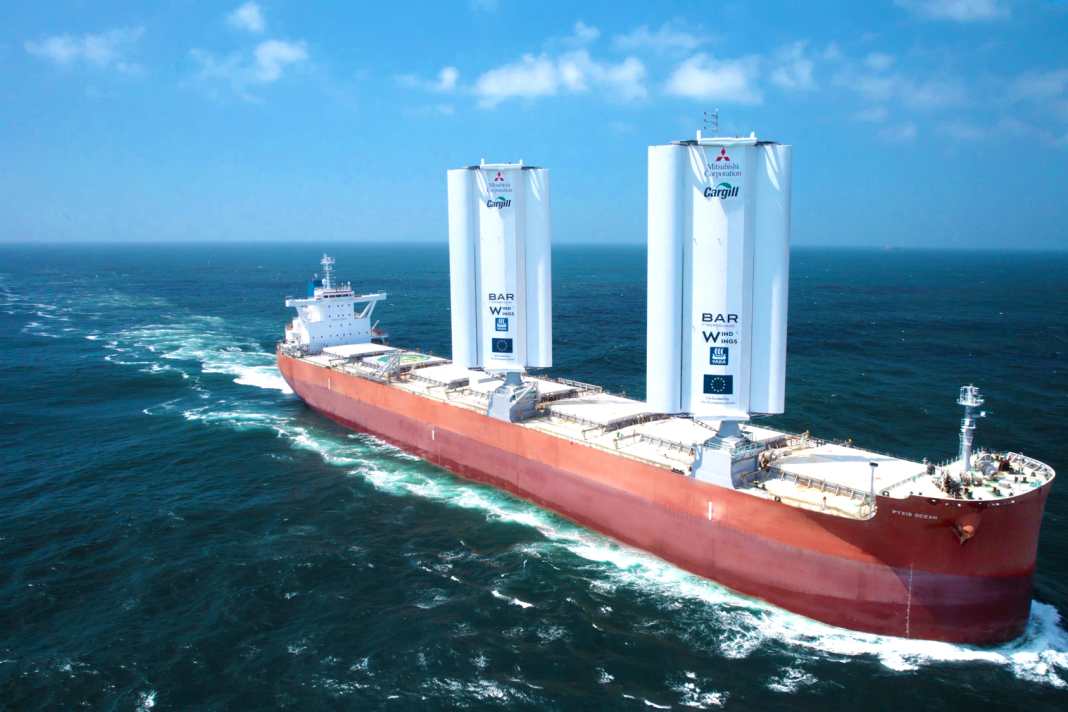





It is hoped that equipping cargo ships with so-called "WindWings" will result in fuel savings of around 30 per cent. The new technology is being used for the first time on a 229-metre-long bulk carrier. This was already completed in 2017, but is now equipped with two sails. The 37.5 metre high metal profiles can be adjusted to the wind and can be folded down in heavy weather or for bridge crossings.
Such wing profiles are also used in the America's Cup, SailGP and the like, but the material of the profiles on "Pyxis Ocean" is more similar to that of wind turbines. Each of the two wings is expected to save 1.5 tonnes of fuel per day. How this will work in practice is currently being tested on the maiden voyage from Singapore to Brazil.
The "WindWings" system was developed by BAR Technologies - a spin-off of Ben Ainslie Racing (BAR). The multiple Olympic and world champion founded the team together with sponsor Land Rover for the 2017 America's Cup. Ainslie himself is no longer involved and is working on the second campaign after 2021 with the new sponsor Ineos. However, the company continues to exist as BAR Technologies and is trying to utilise knowledge and findings from the America's Cup for commercial purposes, among other things.
Sailing cargo ships could revolutionise trade routes
In the near future, the current initiative could significantly reduce CO² emissions from shipping. The decisive factor here is the fact that the sails can be retrofitted. This means that the changeover could be realised much faster than with other pilot projects. However, the developers will also be involved in the construction of two new cargo ships. The hull will then also be specially adapted.
The owner of the "Pyxis Ocean", which can move over 80,000 tonnes, is the Mitsubishi Group. The cargo ship is chartered by Cargill and was fitted with sails at the COSCO shipyard in China. The price of the "WindWings" is currently unknown.
The idea of supporting cargo ships with wind power is no longer new and is also being taken up by other projects. Many projects are under development, some are already in the testing phase. Not only classic sails and wings, but also kites and rotors are being used. If these or similar sails become established on cargo ships, this could also have an impact on the chosen waterways - back towards the original trade routes.
